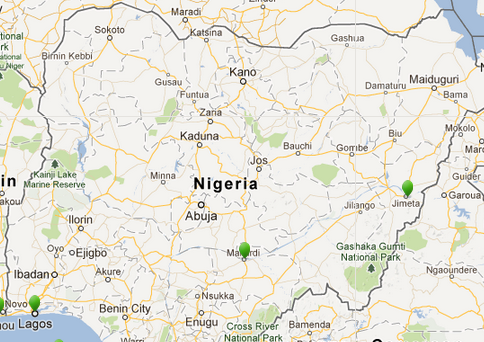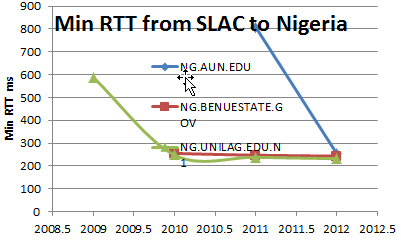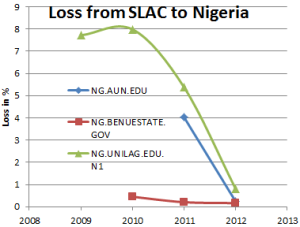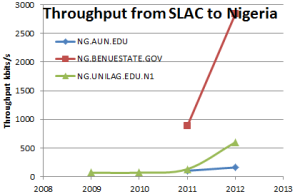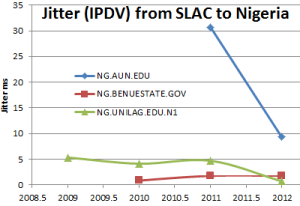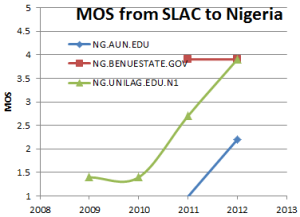Introudction
Hansen, Jerrod E <HansenJE@state.gov> sent email 12/5/2012 requesting:
My name is Jerrod Hansen. I am an economic officer at the US Embassy in Abuja, Nigeria. I cover several portfolios, including Information and Communication Technology (ICT). I’m working on a project looking at the growth in ICT in Nigeria over the last decade and am including regional and continental trends as well. I found some of the work you’re associated via the IEPM PingER case studies and was wondering if there is anything more recent than what’s on the website at https://confluence.slac.stanford.edu/display/IEPM/PingER+Case+Studies. If you have any information, reports, studies, references or just general encouragement on this, I’d be very grateful if you could find a few moments to send it out to me.
Newer data on Nigeria
PingER monitors 3 hosts in Nigeria:
Site |
Host |
Location |
PingER Alias |
|---|---|---|---|
American University of Nigeria |
www.aun.edu.ng |
Yola Adamawa State |
NG.AUN.EDU |
Government of Benue State of Nigeria |
www.benuestate.gov.ng |
Makurdi, Benue State |
NG.BENUESTATE.GOV |
University of Lagos |
www.unilag.edu.ng |
Akoka, Yaba, lagos |
NG.UNILAG.EDU.N1 |
Their locations are shown in the map below:
Minimum RTT
The minimum RTT measured from SLAC to the Nigerian hosts are seen below:
Minimum RTTs > 450ms usually indicates taht the link went via Geostationary Satellite. It is seen that NG.AUN.EDU transitioned to a terrestrial link in 2012, while NG.BENUESTATE.GOV transitioned in 2010.
Throughput
The maximum TCP throughput can be roughly estimated from the loss and average RTT using the Mathis formula. the three metrics are seen in the table below:
Average RTT |
Loss |
Derived throughput |
|---|---|---|
|
|
|
Mean Opinion Score (MOS)
The MOS is a subjectiveness of the quality of speech developed by the Telecommunications industry. 5 is perfect HiFi, 1 is can't hear anything useful. Above ~3.6. is usable. The MOS can be derived from the RTT, jitter and loss.
|
|
|
|
|---|---|---|---|
|
|
|
|
It is seen that VoIp calls from SLAC (Stanford university, california, USA) became feasible in 2012.
